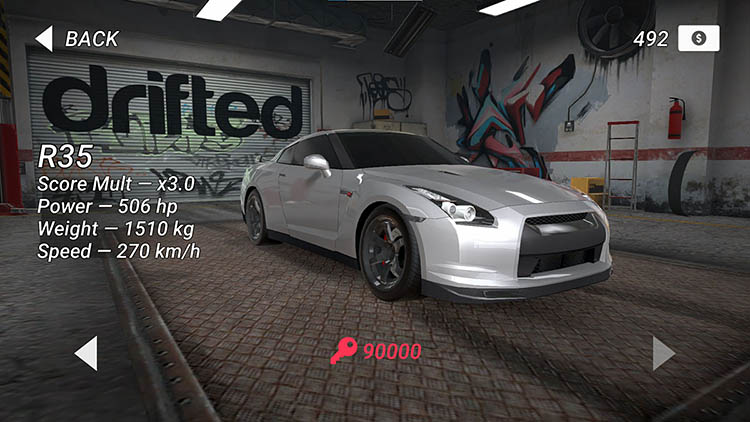What is the Difference between a Nissan Zenki And a Nissan? Unveiling the Distinctions
The difference between a Nissan Zenki and a Nissan Kouki is the styling and design. The Zenki refers to the first generation, produced from 1989 to 1994, while the Kouki refers to the second generation, produced from 1995 to 1998.
The Zenki has a more angular and aggressive appearance, with rectangular headlights and a simpler grille design. On the other hand, the Kouki has a rounder and sleeker look, featuring circular headlights and a more modern front-end design. These differences in styling give each generation its own unique character and appeal.

Credit: www.drifted.com
The Evolution Of Nissan Cars
Nissan cars have seen an evolution over the years, with different models catering to varying preferences. Understanding the concept of Zenki is crucial in comprehending the differences between a Nissan Zenki and a Nissan. Nissan boasts a rich history, with their car models showcasing their advancements.
From sedans to SUVs, Nissan has established itself as a reliable and innovative brand. The Zenki represents an earlier version, while a Nissan refers to a later model in the brand’s lineup. Each model has its distinctive features and improvements, making it important for car enthusiasts to be aware of the evolution.
By diving into Nissan’s history and delving into their various car models, one can gain a comprehensive overview of the brand’s progress and the differences between a Nissan Zenki and a Nissan.
Understanding The Nissan Zenki And Nissan Models
Nissan Zenki and regular Nissan models differ in their features and design. Zenki, derived from a Japanese term meaning “early period,” is a specific trim level of Nissan vehicles. It is characterized by its unique styling elements and distinct upgrades.
These enhancements can include modified headlights, bumpers, and interior features. Regular Nissan models, on the other hand, refer to vehicles that do not fall under the Zenki category. They may have standard designs and features compared to the more visually distinct Zenki models.
Understanding the difference between these two options can help buyers make an informed decision based on their preferences and desired aesthetic appeal. Ultimately, it comes down to personal taste and whether one is drawn to the more individualistic styling of the Zenki or the simplicity of regular Nissan models.
Exterior Design Variations
Nissan Zenki and regular Nissan models differ significantly in terms of their exterior design. The variations in design have a notable impact on the overall look and appeal of these cars. The exterior features of Nissan Zenki models are worth comparing, as they showcase unique elements that set them apart.
From the sleek curves to the bold grille design, Zenki models exude a sense of modernity and elegance. On the other hand, regular Nissan models may have a more conventional aesthetic, with a focus on simplicity and functionality. These design differences contribute to the individual character of each car and cater to different preferences.
Whether you prefer the sophisticated look of a Zenki or the timeless appeal of a regular Nissan, both designs have their own charm. Ultimately, the choice comes down to personal taste and style.
Performance And Engine Specifications
Nissan Zenki and regular Nissan models have distinct performance and engine features that define their individuality. These variations greatly impact the driving experience. When comparing the two, it is important to analyze the key performance differences. Exploring the engine specifications reveals the power and efficiency disparities between these models.
The Zenki model exhibits enhanced performance capabilities, providing a thrilling and exhilarating ride. On the other hand, regular Nissan models prioritize everyday functionality and a smoother driving experience. By delving into performance aspects, we can also better understand the unique driving dynamics offered by each model.
With diverse performance characteristics, both Zenki and regular Nissan models cater to different driver preferences and needs. Whether you seek a sportier ride or a practical vehicle for daily use, each model’s distinct performance features offer a choice for every driver.
Interior Features And Technology
Nissan Zenki and regular Nissan models offer unique interior features and technology. Both models showcase technological advancements that enhance the driving experience. Comparing these advancements allows us to understand their impact on ownership. The difference in interior features plays a crucial role in the overall driving experience.
By examining these differences, we can evaluate the comfort, convenience, and safety aspects of both models. The amenities provided in each model vary, catering to different preferences and needs. From infotainment systems to advanced driver-assistance features, each model offers its own set of technological advancements.
Understanding these differences is essential for potential buyers looking for the perfect blend of comfort and technology in their Nissan vehicle. Whether it’s the Zenki or the regular Nissan models, the interior features are designed to enhance the overall driving experience.
Price And Market Positioning
Nissan Zenki and regular Nissan models differ in price and market positioning. Each model targets a specific audience and offers unique value propositions. The pricing strategy and market positioning have a significant impact on the demand and popularity of these cars.
By understanding the target audience, Nissan can effectively position its Zenki and regular models to cater to different market segments. The Zenki model may appeal to a younger demographic looking for a sportier option, while the regular Nissan models may attract a broader range of consumers seeking reliability and practicality.
The pricing of these cars also plays a crucial role in shaping consumer perception and purchase decisions. A well-executed pricing strategy, combined with strategic market positioning, can contribute to increased demand and overall success in the competitive automotive market.
Frequently Asked Questions For What Is The Difference Between A Nissan Zenki And A Nissan
What Does Zenki Mean In Cars?
Zenki in cars refers to the first generation of a particular model or series, typically denoted by its early production years.
What’S The Difference Between Zenki And Kouki?
The main difference between Zenki and Kouki is the year of manufacture and design updates.
What Is The Difference Between Zenki And Kouki Front End?
Zenki and Kouki refer to different generations of front-end designs in Japanese car models, typically referring to pre and post-facelift versions.
What Is The Difference Between S14 Zenki And S14 Kouki?
The S14 Zenki and S14 Kouki are different versions of the Nissan Silvia S14 model.
Conclusion
After exploring the key differences between a Nissan Zenki and a Nissan Kouki, it is clear that both models offer unique features and characteristics for car enthusiasts. The Zenki, with its sleek and timeless design, represents the older generation of Nissans, while the Kouki showcases a more modern and aggressive look.
In terms of performance, the Zenki delivers a smoother and more refined driving experience, whereas the Kouki offers enhanced power and sportier handling. Additionally, the interior of the Kouki is often more advanced and loaded with technology. Ultimately, deciding between a Zenki and a Kouki comes down to personal preference and the desired driving experience.
Whether you appreciate the classic aesthetics of the Zenki or the modern allure of the Kouki, both models embody the exceptional craftsmanship and innovation that Nissan is known for. So, whichever option you choose, you can confidently enjoy the thrilling and dynamic ride that Nissan has to offer.
